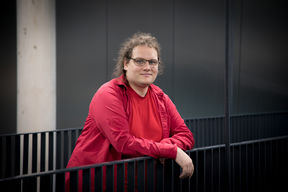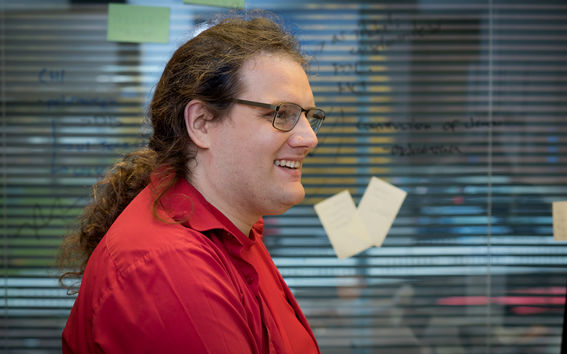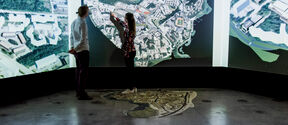Social media design that seeks to mitigate polarization could increase ideological distance

Developers and researchers of social media services have long believed that polarization in discussions can be reduced by designing services that recommend content from perspectives opposite to the users’ own views. However, those interviewed in the research by Aalto University and Syracuse University in the US expressed their doubts on the notion. Some even believed that this type of design could, in some cases, increase polarization.
A research article by Aalto’s visiting researcher Matti Nelimarkka and his US colleagues was published at the Computer-Supported Cooperative Work and Social Computing (CSCW) Conference on November 9. Researchers interviewed 19 Finnish or American persons, who were either professionals in the political field or ordinary citizens who often discuss politics on social media yet are professionally not affiliated with it.
Researchers presented participants with four different content recommendation models that could be used on Facebook, for example. In the first model, the service recommended users with content that is in conflict with their opinions. The second model encouraged the user to become familiar with such content before posting their own content. In the third model, the user witnessed their friend having shared content that contradicts the user’s own opinions. The fourth model showed the user their friends and friends of friends discussing a subject in a way that contradicted the user’s own views on the matter. When presenting the different models, researchers asked participants to share their experiences on the models.
The interviewees detected different elements in the models that could even increase political polarization. Participants were most critical of the model recommending articles only presenting views opposite to one’s own. The model that encourages the user to rethink before posting content can, according to the interviewees, seem scornful and lead to self-censorship or even anger. Recommendation based on one’s friends or acquaintances of friends, on the other hand, works poorly if the user has a small social network.
The interviewees felt even if a service was designed to mitigate polarization, seeing views opposite to one’s own may rather increase ideological distance between individuals. For this reason, services should be planned in a way that they are guaranteed to push people towards appropriate behavior. 'Platforms cannot guide the way people behave but they can, at best, encourage them to engage in more appropriate discussions,' says Nelimarkka.
Seeing someone you know recommend content can motivate opening the link
Participants did find also positive elements in the models. They pointed out that each one could offer people new information and lead to a wider understanding of the phenomenon, and through it, a deeper discussion.
'Many noted that this works as a moment of constraint: before posting anything on the service, one can witness multiple different viewpoints and perhaps try to modify their post,' Nelimarkka says.

Matti NelimarkkaOpportunities are missed when researchers in other fields fail to utilize things that have been discovered on the HCI side long ago
Many participants believed that once the user perceives someone close to them sharing a piece of news that clashes with their own opinion, motivation to click on the news increases. In situations where people acquire contacts from different life situations, it is common to form a large circle of acquaintances. In fact social media platforms have for years now focused on solving privacy management issues resulting from a large circle of friends.
Focusing on relatively open discussion forums, such as Twitter and Facebook, may however be an outdated approach. According to Nelimarkka, the research also pointed out that political experts in particular have often moved to discuss politics in more closed groups, such as WhatsApp. 'This is even worse for polarization. Many interviewees raised this subject, and it still hasn’t been widely covered in literature.'
A weak understanding of other fields may result in several problems
A research review by Nelimarkka was also published at CSCW. The review centers on how democratic decision-making is presented at human-computer interaction (HCI) conferences and how political science and HCI researchers could move toward an improved trading zone.
A poorly functioning collaboration leads to a range of issues. Nelimarkka highlights a study on customer satisfaction measured by smiley face push buttons as an example. These types of research articles, according to Nelimarkka, always begin the same way: Researchers want to support democracy that is based on voting, so they situate buttons in people’s everyday surroundings. With these buttons, people would easily provide feedback and get it across.
'None of the papers return to address whether this wish is actually ever carried out,' Nelimarkka says. 'They do report on how many times the buttons have been pushed and how they have been used. Yet research on political participation has taught us that people’s actions are distorted. I push those buttons several times, as many times as it takes to get my opinion across better! But someone maybe doesn’t dare do this.'
It is probable, then, that not everyone’s position is displayed equally in votes, but if the central problems related to participation in political processes are unfamiliar to researchers, this is a viewpoint that is easily overlooked in analyses. Nelimarkka describes the worst-case scenario, where a lack of collaboration and a weak understanding of another field may lead to researchers in one field developing something that has long ago been introduced in another field and proven to not work.
Collaboration leads to higher-quality research
Based on Nelimarkka’s review, researchers of both HCI and social sciences still have much to learn from each other. However, collaboration needs to take place under conditions set by both disciplines. Nelimarkka believes that it is necessary to create shared information sharing points, which researchers of politics can use to familiarize themselves with central HCI concepts and methods, and vice versa.
Better collaboration would lead to research that is better conceptualized and detailed in both fields. 'The question is: how do we educate people in a way that enables them to do this? Pursuing several master’s degrees is not the answer.'
Nelimarkka himself has a multidisciplinary background. He completed his bachelor and master’s degrees at the Faculty of Social Sciences but pursued doctoral studies on human-computer interaction. The reason behind the 'crossover to another field' was the fact that technology was poorly considered at the Faculty of Social Sciences at that time. 'Towards the end of my doctoral thesis, I began working on his literature review and realized I’d come up with everything I want to do: combine these two areas.'
Now Nelimarkka is a visiting researcher at Aalto’s Department of Computer Science. Since technology is present everywhere these days, he points out, HCI can be used to study practically anything. City bikes, for example, are a part of HCI, as they collect data on people. They can be researched as not only information technology but also as a sociological or political phenomenon.
'For me, that’s quite a few opportunities missed when researchers in other fields fail to utilize things that have been discovered on the HCI side long ago. On the other hand, HCI researchers sometimes ignore the niche understanding of other fields.'
Links to the publications:
A Review of Research on Participation in Democratic Decision-Making Presented at SGCHI Conferences
English translation by Annika Rautakoura
Read more news

From award-winning food packaging to researching biodesign spaces
From an early age, Ena Naito was drawn to both the sciences and design. She found the perfect place to bring those two worlds together.
Architect and designer Talisa Dwiyani combines passion, materials, and collaboration in her work
Indonesia-born Talisa's takeaway from Aalto University is the cross-disciplinary way of working.
Giiguulen Enkhsaikhan: More sustainable textiles with hemicellulose
Aalto University's doctoral researcher's presentation of hemicellulose won the third prize in the Marcus Wallenberg Young Researchers’ Challenge event in November






